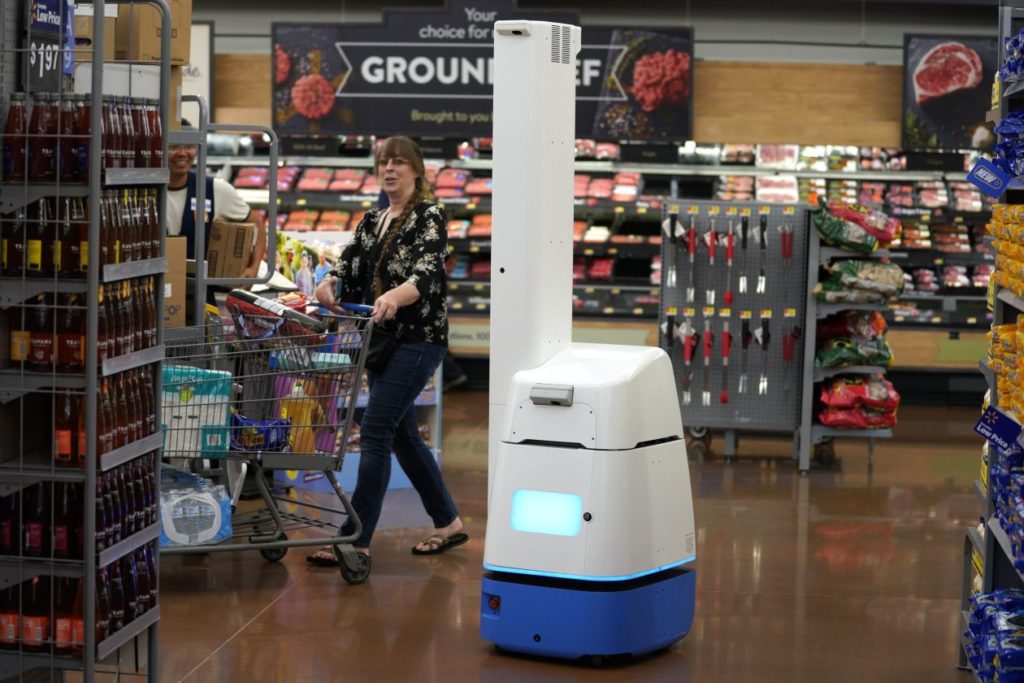New Job For Robots: Taking Stock For Retailers (#GotBitcoin?)

As retail supply chains get more complicated, stores are looking at mobile data collection to track inventory levels. New Job For Robots: Taking Stock For Retailers
Retailers that have been turning to robots to handle inventory in warehouses are testing whether machines can handle a new task: detecting when store shelves need restocking.
Keeping track of inventory and doing it quickly has become one of the most pressing supply-chain concerns for merchants as they try to put into place new strategies for selling and delivering goods under the fast-changing demands of e-commerce.
Services including rapid home delivery and buy online-pickup in store are pushing retailers to blur the lines between distribution centers and stores—and obscure their view of how many items may be in stock and where the goods are held.
The complicated blending of inventories in stores and warehouses has some retailers testing the use of shelf-scanning robots that roam store aisles and send restocking data back through their networks.
“We’re giving them a real time, actual image of their product layout across the whole store, up to twice or three times a day,” said Red McKay, managing director for Europe at Bossa Nova Robotics Inc. The company’s autonomous robots are being deployed in a pilot at 50 Walmart Inc. stores.
More than three-quarters of respondents to a survey released this month by supply-chain software maker JDA Software Group Inc. said they aren’t able to track inventory in real time, and 55% don’t have a single view of product levels across distribution channels.
“We’ve been talking for years and years about e-commerce, and how we need to merge e-commerce with your in-store commerce,” Lori Mitchell-Keller, co-president of SAP Industries, a division of German business software maker SAP SE , said in an interview at the National Retail Federation trade show in New York earlier this month. “And yet at the show, I’ve talked to at least five retailers in just one day who are so excited that they’re finally getting rid of their e-commerce distribution center and combining with other distribution centers.”
Handling both consumer online orders and store replenishment under a single umbrella can help retailers reduce the costs of carrying inventory by putting more stock in one place, Ms. Mitchell-Keller said.
That is a complicated undertaking, however, given how rapidly goods can move around a store as customers pick up and then discard items. Shoppers who want to buy something online and pick it up in a store may have to wait because most retailers can’t immediately confirm whether an item is available at a particular location.
“Because they didn’t have that real-time inventory view, they’re only able to offer to the customer the ability to pick up stock the following day, because they are dispatching it from their warehouse,” said Wayne Snyder, JDA’s vice president of retail industry strategy for Europe, the Middle East and Africa.
Companies are trying to solve the problem without having store workers undertake near-constant inventory counts.
That may mean robots, or mobile data-collection units, such as those being tested at Walmart that use lasers, radar and cameras to navigate store aisles and record which products are out of stock. The technology does more than just log empty shelves; the data it gathers can help managers target which areas to restock based on profitability and other factors and provides a more accurate snapshot of store inventory than human workers armed with scanners, according to the companies.
Frederic McCoy, a senior vice president at Jabil Retail, a unit of manufacturing services company Jabil Inc., whose Badger Technologies division makes a data-collection robot, calls it “optimizing the shelf.”
Ten retailers are planning to test the robots this year, Mr. McCoy said, “predominantly grocery, but we’re also looking at the pharmacy space, and we’ve done some trials in home improvement.”
Go back
Leave a Reply
You must be logged in to post a comment.